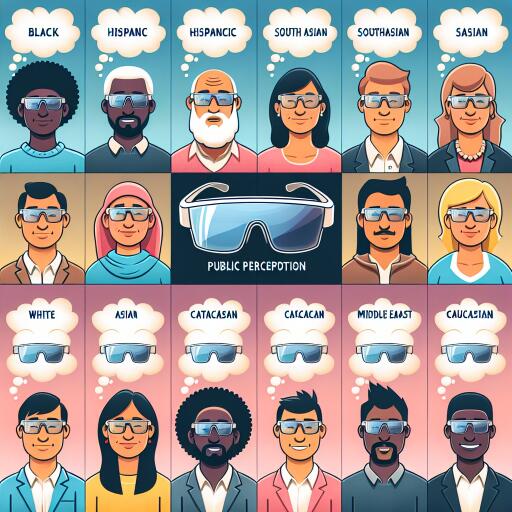Smartglasses: Complex Public Perception Unveiled
Smartglasses have rapidly transformed since the early days of Google Glass, which faced significant societal resistance back in 2013. The revolutionary product never managed to hit the commercial success it aimed for, largely due to perceptions of being intrusive and awkward.
Today, the landscape of smartglass technology is in stark contrast. Modern smartglasses, like Meta’s Ray-Ban Wayfarer edition, seamlessly blend with traditional eyewear, concealing their technological abilities. While these are not pioneers in the market, advancements in their second-generation design have spurred an increase in sales over the past year.
The discourse around smartglasses often skips over the social perceptions and risks associated with them. Recent research endeavors to fill this gap by exploring how these devices are integrated into daily life and unveiling the range of opinions Australians hold about them.
The study shows a divide between smartglass users and non-users. Enthusiasts, often part of closely-knit communities, find the devices attractive and socially elevating, while skeptics view them as potential threats to privacy and enablers of antisocial conduct. Although some shared concerns exist across the groups, the need for regulation is evident.
The Users and the Skeptics
Modern smartglasses from Meta double as compact, wearable computers, masquerading as regular glasses. These devices enable users to record videos, listen to music, make calls, and even stream content live to platforms like Facebook. The latest iteration includes built-in AI technologies, marking a precursor to fully-fledged augmented reality (AR) eyewear.
The expectation is that by 2034, the VR and AR headset sector could be valued at an astonishing US$370 billion. A national survey of over a thousand Australians provided insights into their perceptions regarding smartglasses.
Findings reveal younger Australians are more inclined to embrace this technology compared to older generations. Remarkably, most smartglass owners (95.6%) reported knowing other users, indicating the presence of tight-knit user communities. Younger users reported higher engagement levels with their devices but also higher instances of risky behavior, such as using smartglasses while driving or recording others without permission, highlighting the urgent need for improved regulations prioritizing safety and curbing risky usage practices.
Non-users express heightened concerns about privacy and the impact of smartglasses on social norms. They are significantly more likely to see the public use of these devices as disrespectful or intrusive.
Nevertheless, both users and non-users acknowledge the potential advantages that smartglasses can bring, aiding individuals when natural human senses fall short.
The Influence of Bias and Growing Concerns
Although data suggests increasing smartglass adoption—58.6% of survey participants are owners—this may not truly reflect public ownership, primarily due to survey methodology. Facebook was used for reaching participants, potentially skewing results by attracting more smartglass enthusiasts. Owners are also more inclined to partake in such surveys, introducing a response bias, while the meta-devices’ market prevalence means some respondents might be deeply embedded in the Meta ecosystem, making them more accepting of its technology.
The findings underscore a critical need for enhancing regulations around smartglasses to ensure they are deployed safely and responsibly. Concerns from non-users regarding antisocial applications and the risk of misuse suggest further study is essential to understand their public use implications.
The potential for covert video recording has already attracted the scrutiny of privacy authorities. Such apprehensions will likely escalate as smartglasses evolve to include more sophisticated capabilities. For instance, students in the USA managed to incorporate advanced facial recognition into a Meta smartglass, raising ethical and privacy concerns. Moreover, recent showcases, such as Meta’s introduction of cutting-edge AR glasses during its annual conference, highlight the swiftly advancing nature of this technology.
The far-reaching implications of widespread smartglass adoption, especially concerning data privacy and surveillance, necessitate vigilant monitoring and tailored regulations to safeguard public safety and well-being. Policymakers must prioritize frameworks that enhance privacy and security while nurturing technological innovation.









